What do you mean by a ‘large’ video file?
While the definition may vary across platforms and contexts, a general rule of thumb is that any video file exceeding 20 megabytes (MB) or 0.02 gigabytes (GB) is considered large for an email.
However, it's important to note that as technology advances and video resolutions continue to soar, the concept of a "large" file is ever-evolving. We're moving towards better quality videos, leading to higher file sizes. Moreover, the acceptable standards of video quality are changing. For instance, nobody would want a low-resolution video anymore when they have the choice of having it in 4K.
Here's a rough estimate of the duration of a video of different resolutions that can be stored in 1GB of storage space.
| Video Resolution |
Storage Space |
| 480p standard definition video |
Approximately 8 hours of footage per 1 GB |
| 720p HD video |
Approximately 3.5 hours of footage per 1 GB |
| 1080p HD video |
Approximately 50 minutes of footage per 1 GB |
| 4K video |
Approximately 12 minutes of footage per 1 GB |
Why bother sending videos via email?
The answer lies in the convenience and familiarity of email communication. Email remains the primary mode of communication for many individuals and businesses.
Moreover, sending videos via email allows greater control over sharing. You can tailor the message, provide context, and ensure that the intended recipients receive the content directly without the need for additional logins or platform registrations.
Additionally, emails provide formality and documentation that can be particularly beneficial in professional settings or when sharing sensitive material. By embedding the video directly into the email, engagement rates can be increased, and the message can be visually enhanced for better communication in email marketing.
But as we discussed above, all email services have a limit to the file size that you can attach to your emails. Here are some of the most commonly used email services with their attachment size limits:
| Email Service |
File Size Attachment Limit |
| Microsoft Outlook |
20 MB |
| Apple iCloud Mail |
20 MB |
| Zoho Mail |
20 MB |
| Gmail |
25 MB |
| Yahoo! Mail |
25 MB |
| AOL Mail |
25 MB |
| Proton Mail |
25 MB |
| GMX Mail |
50 MB |
It's important to note that these limits apply to the total size of all attachments in a single email, not just the video file itself.
How to send large videos in email?
While email size limitations can be frustrating, there are several effective strategies you can employ to overcome this hurdle and successfully share your large video files. Let's explore these methods in detail:
1. Cloud storage services
To bypass email size limitations, use cloud storage services like Google Drive, Dropbox Transfer, or Mail Drop. Upload your video to your preferred platform, generate a sharable link, and share it with your recipient. If they have access, they can view and even download a copy of the video directly from the link. We’ve shown you the steps below.
Google Drive
Google Drive is a widely used cloud storage service that seamlessly integrates with Gmail. When you attempt to attach a file larger than 25 MB to a Gmail email, the service automatically prompts you to upload the file to Google Drive and share a link instead.
To share a video via Google Drive, follow these steps:
Step 1. Upload the video file to your Google Drive account.
Step 2. Right-click on the file and select "Get link" or "Share."

Step 3. Adjust the sharing permissions as desired (e.g., "Anyone with the link can view").
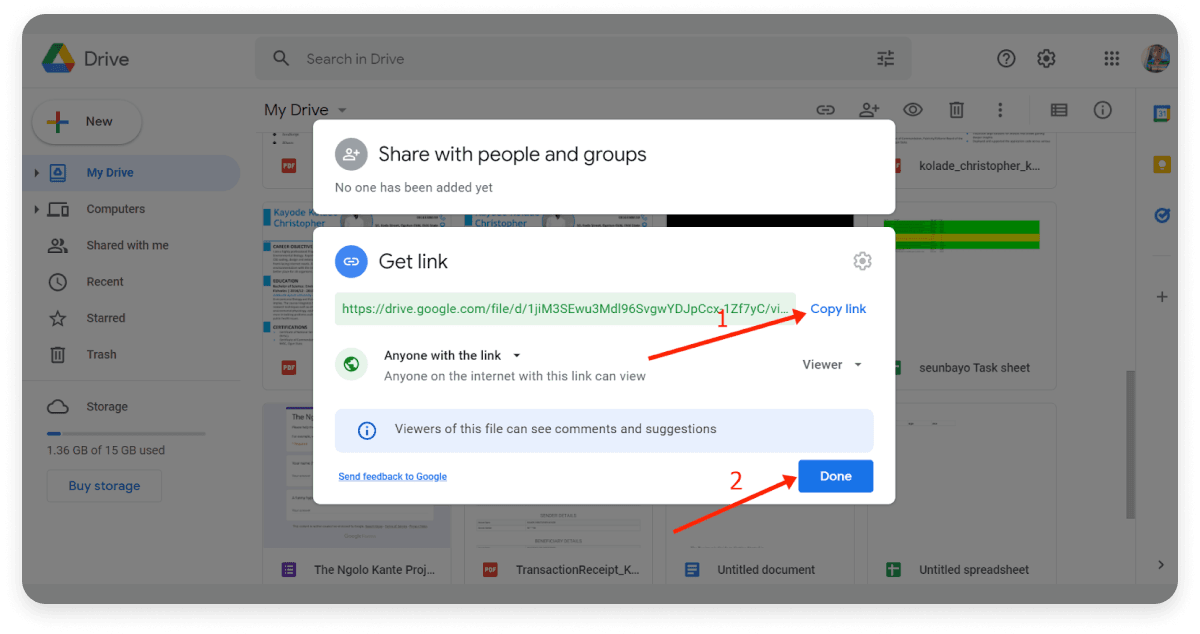
Step 4. Copy the shareable link.

Step 5. Paste the link into your email message and send it.
Dropbox
Dropbox is another popular cloud storage service that offers a user-friendly interface and robust file-sharing capabilities.
To share a video via Dropbox, follow these steps:
Step 1. Upload the video file to your Dropbox account.
Step 2. Right-click on the file and select "Share."
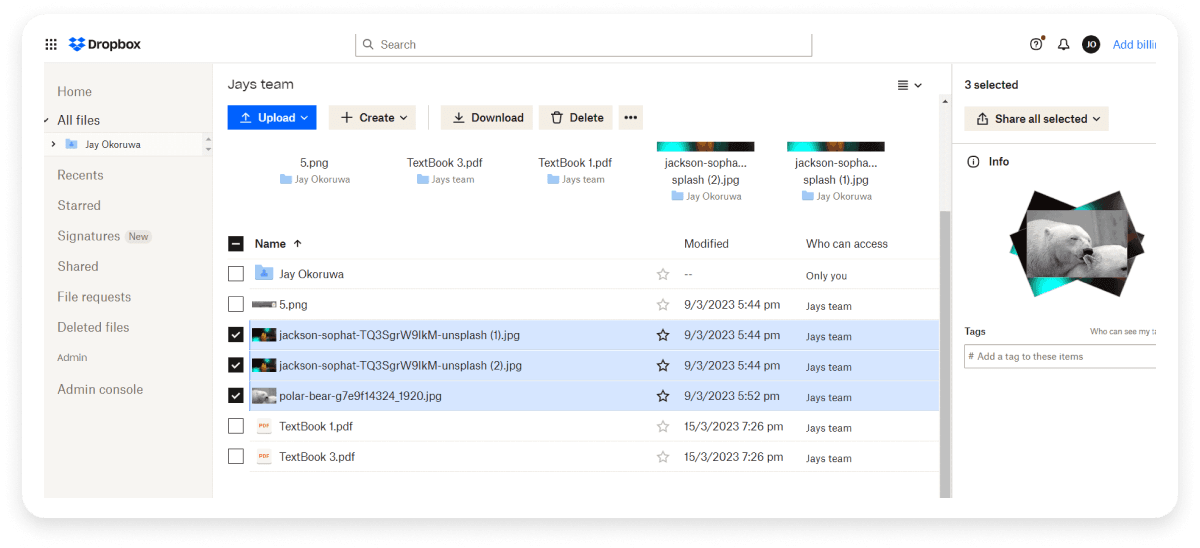
Step 3. Choose the desired sharing options (e.g., "Create a link," "Set password," etc.).
Step 4. Copy the shareable link.
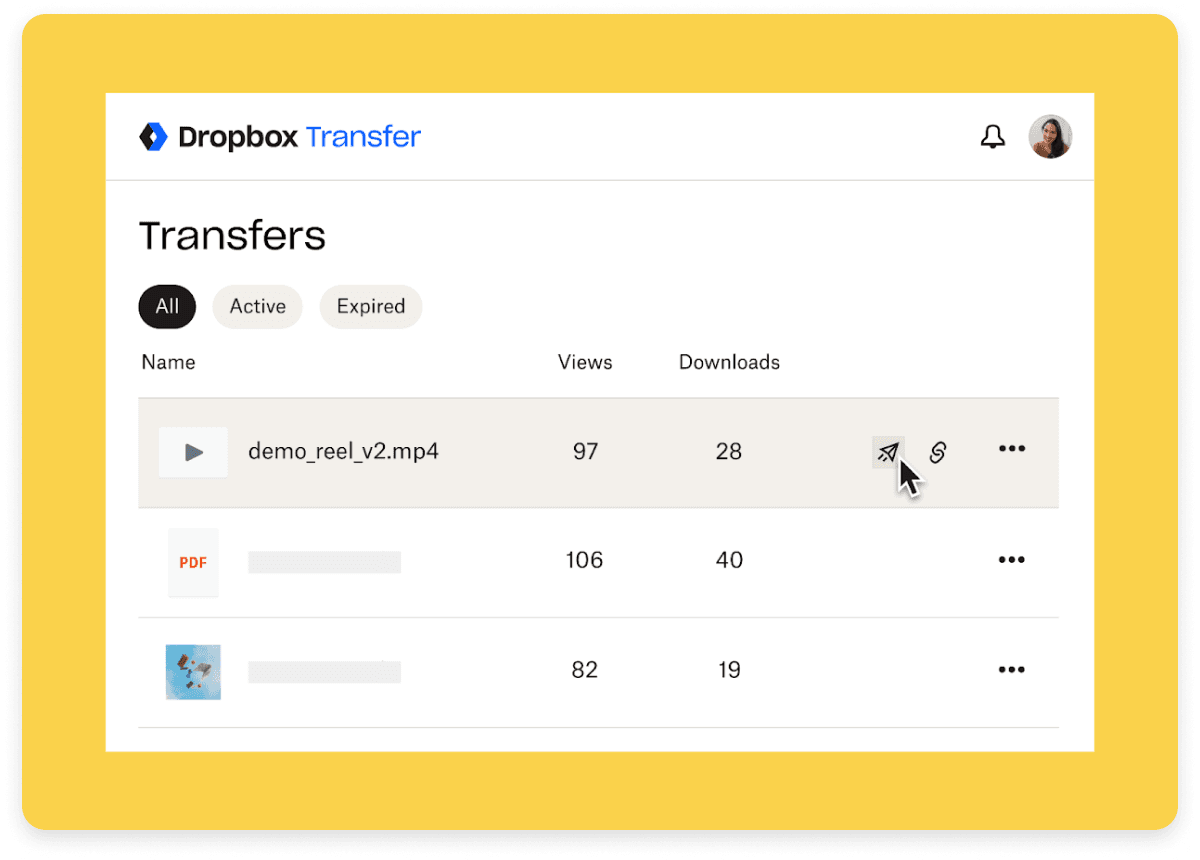
Step 5. Paste the link into your email message and send it.
Microsoft OneDrive
Microsoft OneDrive is a cloud storage service tightly integrated with the Microsoft Office suite, making it a natural choice for Outlook and other Microsoft product users.
To share a video via OneDrive, follow these steps:
Step 1. Upload the video file to your OneDrive account.
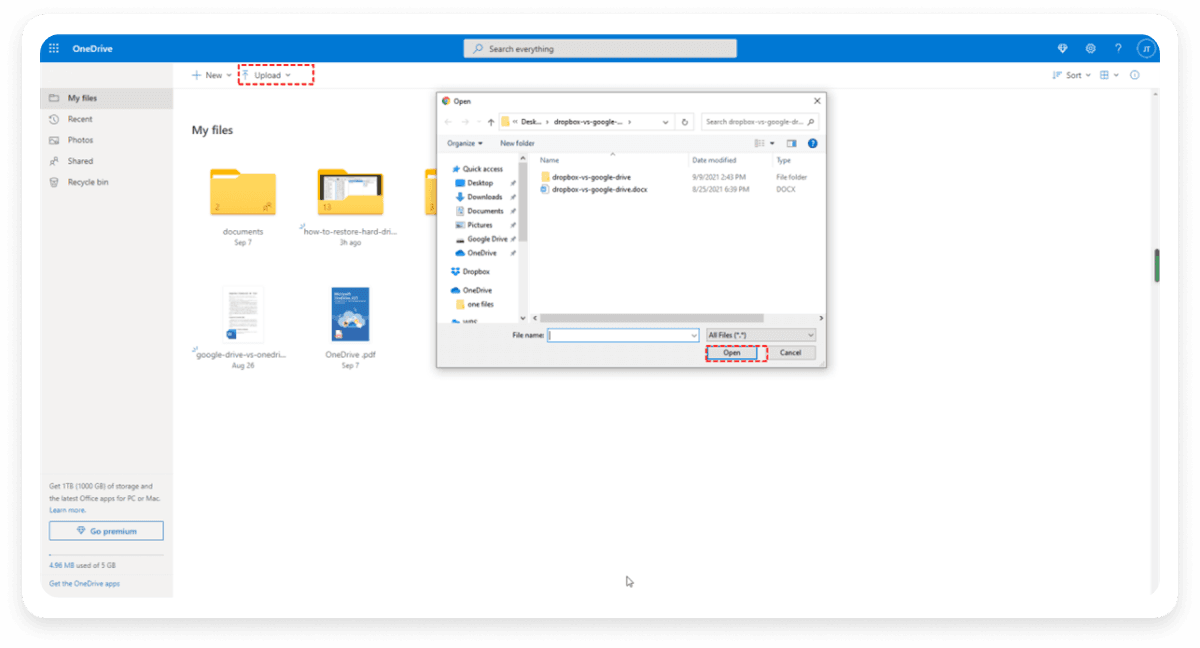
Step 2. Right-click on the file and select "Share."
Step 3. Choose the desired sharing options (e.g., "Get a link," "Set expiration date," etc.)
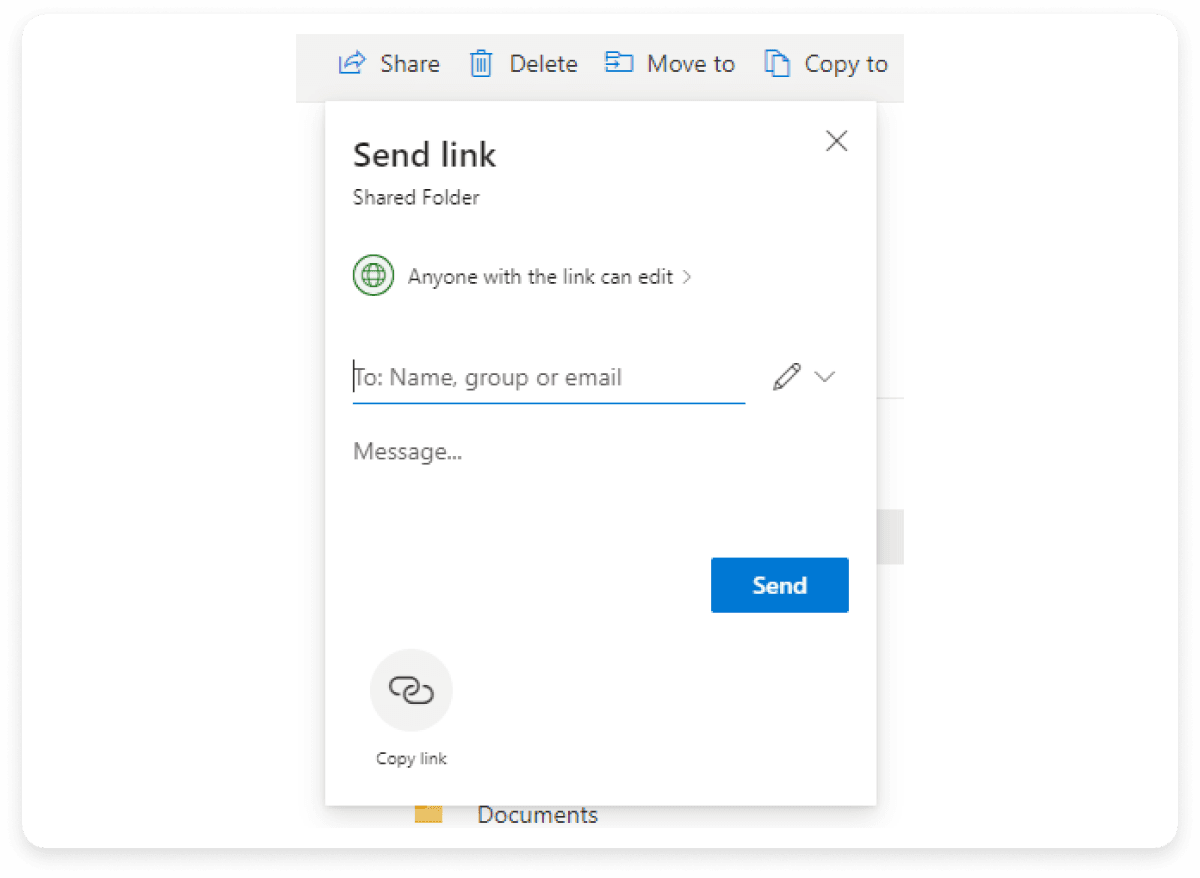
Step 4. Copy the shareable link.
Step 5. Paste the link into your email message and send it.
Many platforms offer collaboration features, allowing recipients to view, comment, or suggest edits directly on the shared file.
2. Compress video files
You can also consider compressing the file size using built-in tools by resizing and choosing a lower video resolution. This may result in slightly reduced video quality, but modern compression algorithms can optimize the balance between size and quality.
Here are some popular video compression tools and their respective capabilities:
HandBrake
HandBrake is a free, open-source video transcoder that supports various input and output formats. It offers various compression settings, allowing you to fine-tune the balance between file size and quality.
- Maximum file size: No specific limit (depends on available storage space)
To compress a video using HandBrake, follow these steps:
Step 1. Launch HandBrake and open the video file you want to compress.
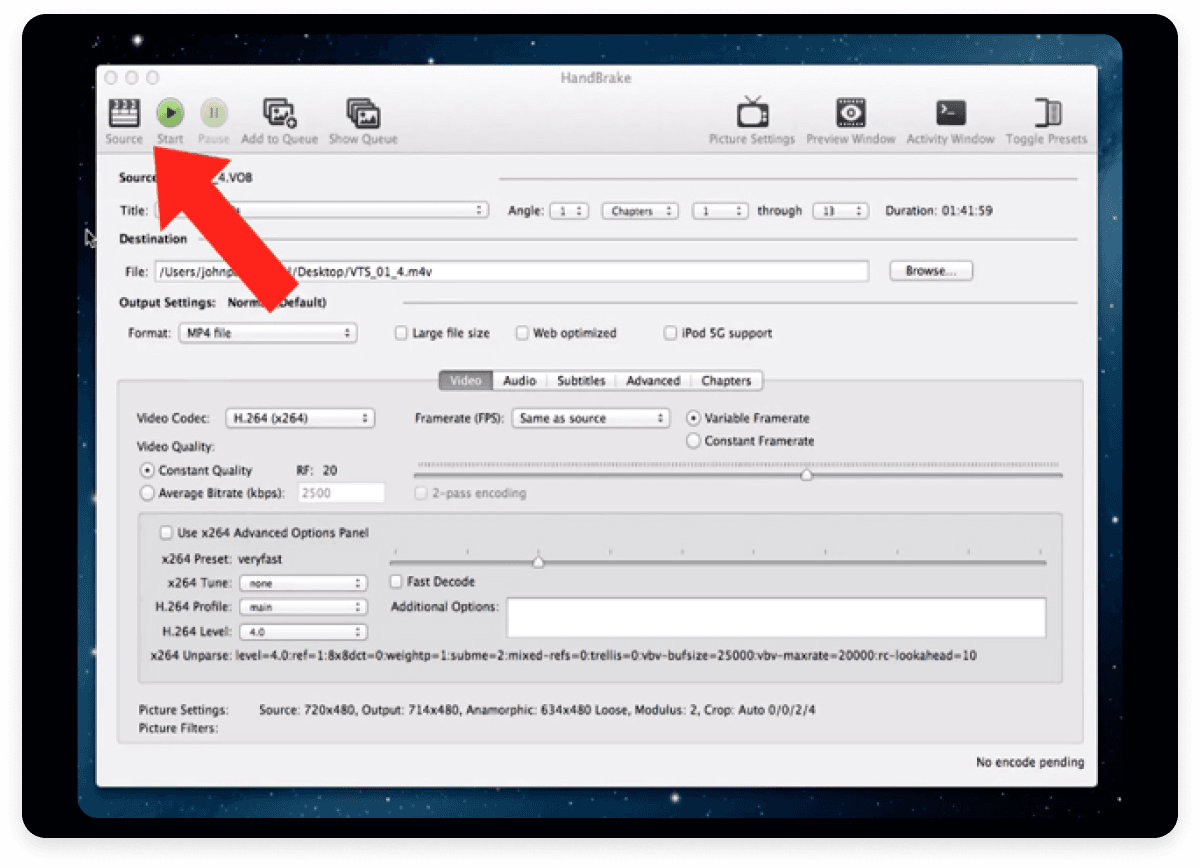
Step 2. Choose the desired output format (e.g., MP4, MKV) and adjust the video and audio settings.
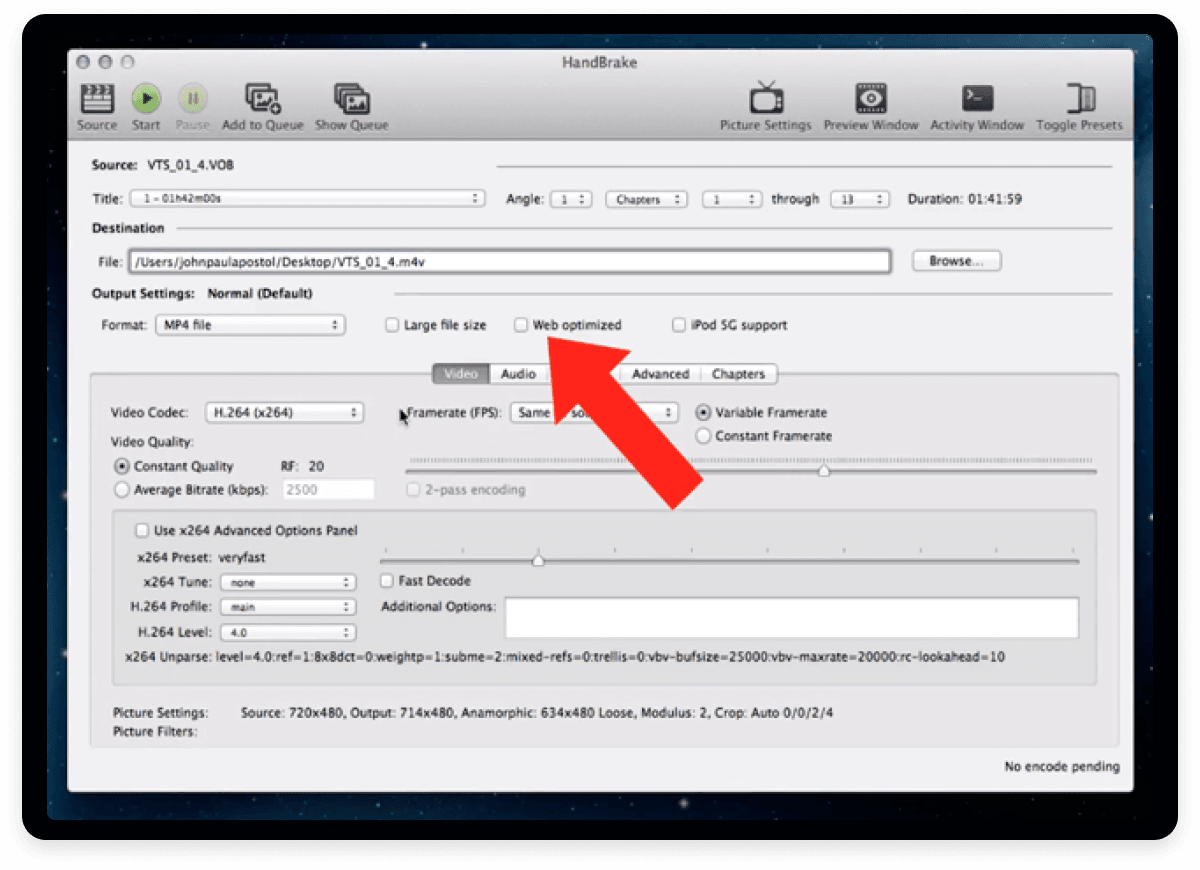
Step 3. Select a lower resolution and bitrate to reduce the file size.
Step 4. Click "Start Encode" to begin the compression process.
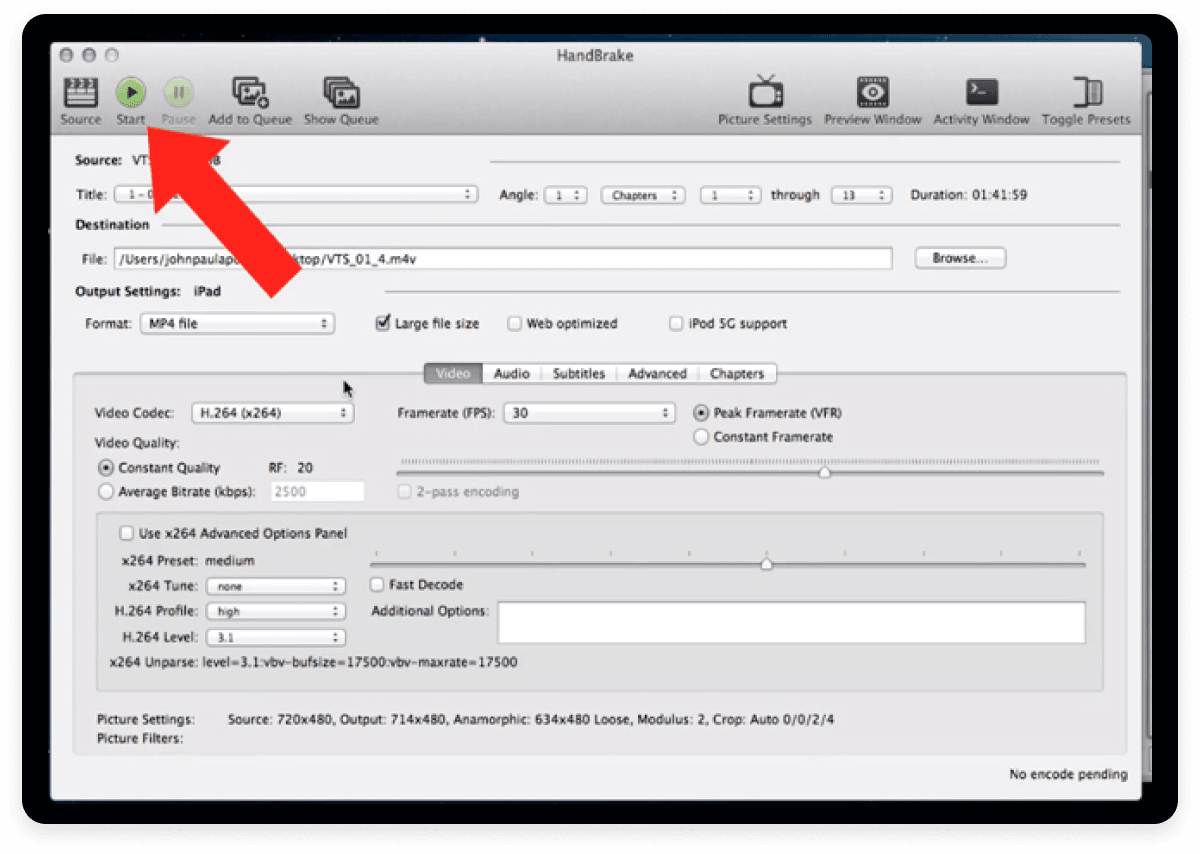
Step 5. Once completed, attach the compressed video file to your email.
WinRAR or 7-Zip
While primarily designed for general file compression, tools like WinRAR and 7-Zip can also compress video files. These utilities offer high compression ratios, allowing you to significantly reduce the file size, albeit with a more noticeable impact on visual quality.
- Maximum file size: No specific limit (depends on available storage space)
To compress a video using WinRAR or 7-Zip, follow these steps:
Step 1. Launch the compression tool (WinRAR or 7-Zip).

Step 2. Select the video file you want to compress.
Step 3. Choose the desired compression level (higher compression = smaller file size but lower quality).
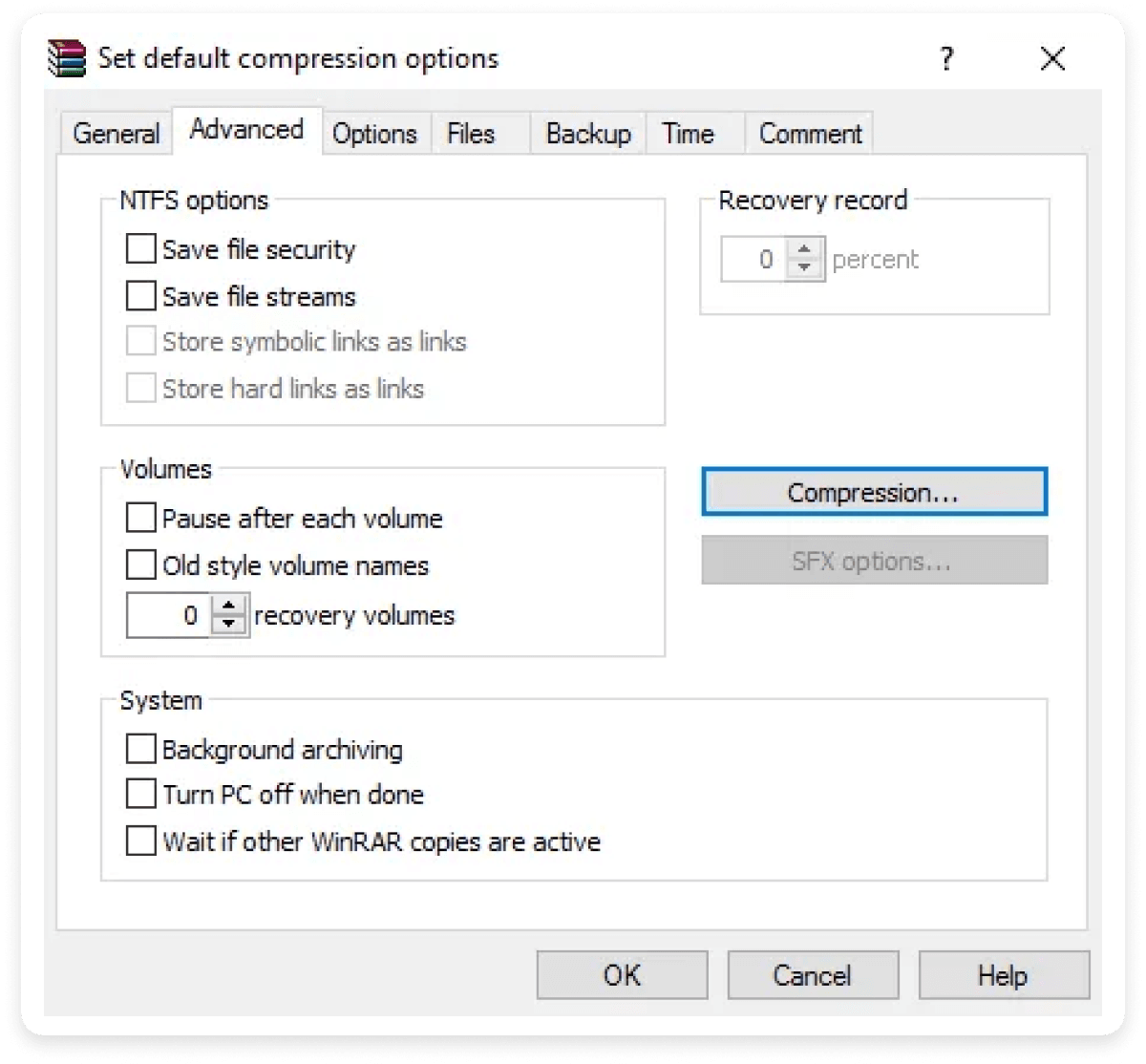
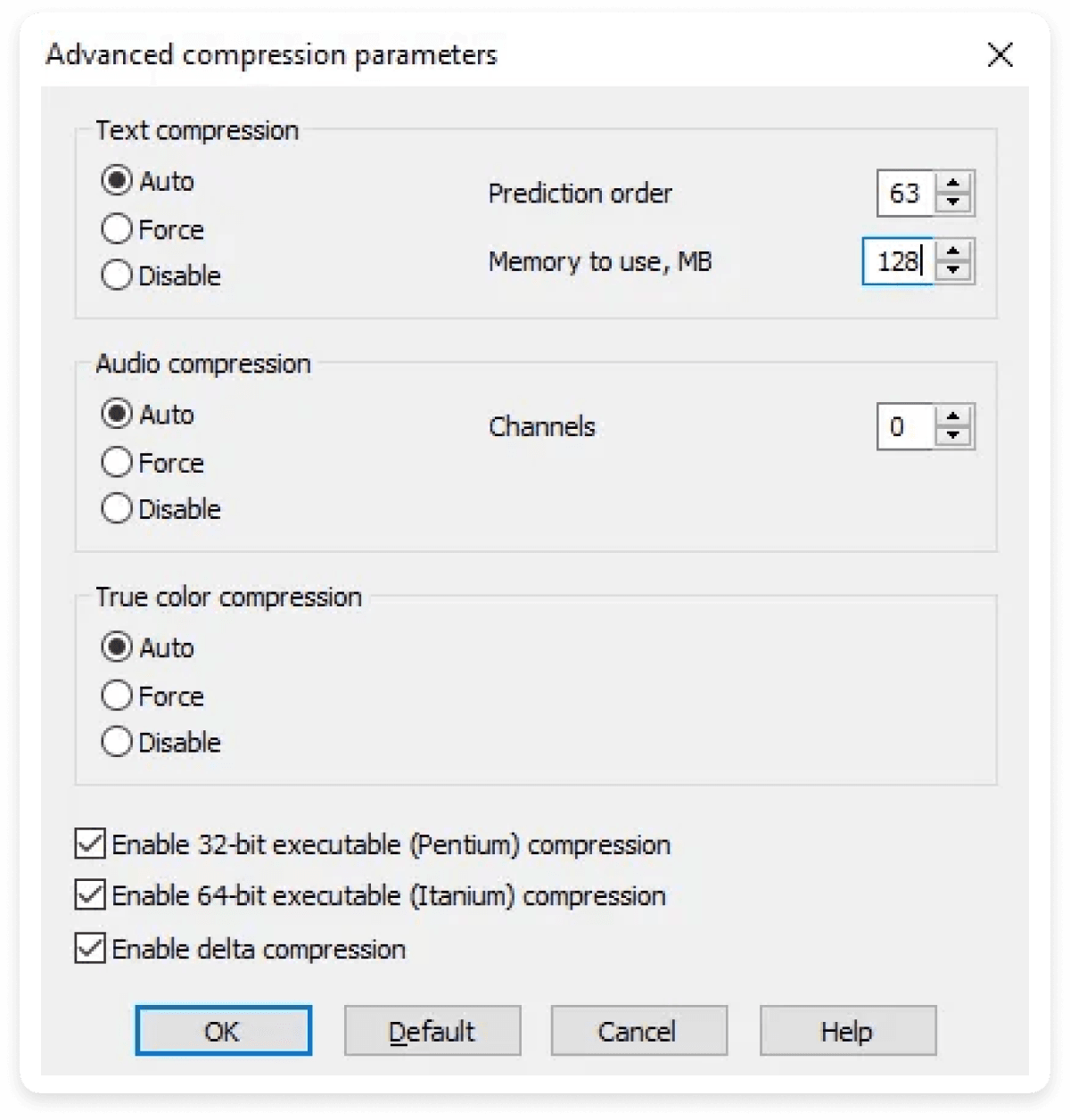
Step 5. Attach the compressed video file to your email.
While compression can be an effective solution for reducing file size, it may only be suitable for some scenarios, particularly those requiring high-quality video playback. Cloud storage or dedicated file transfer services (discussed next) may be more appropriate.
3. File transfer services
Unlike cloud storage, which focuses on providing long-term storage for your files, file transfer services are more streamlined for efficient file sharing. They offer a straightforward process where you upload your video to third-party cloud storage, generate a shareable link, and share it with your recipient—perfect for sharing those hefty videos without clogging up your cloud storage.
Here are some popular file transfer services you can use:
WeTransfer
WeTransfer is a widely used file transfer service that offers a simple and intuitive interface for sharing large files.
To send a large video file using WeTransfer, follow these steps:
Step 1. Visit the WeTransfer website and click "Send" or "Upload."
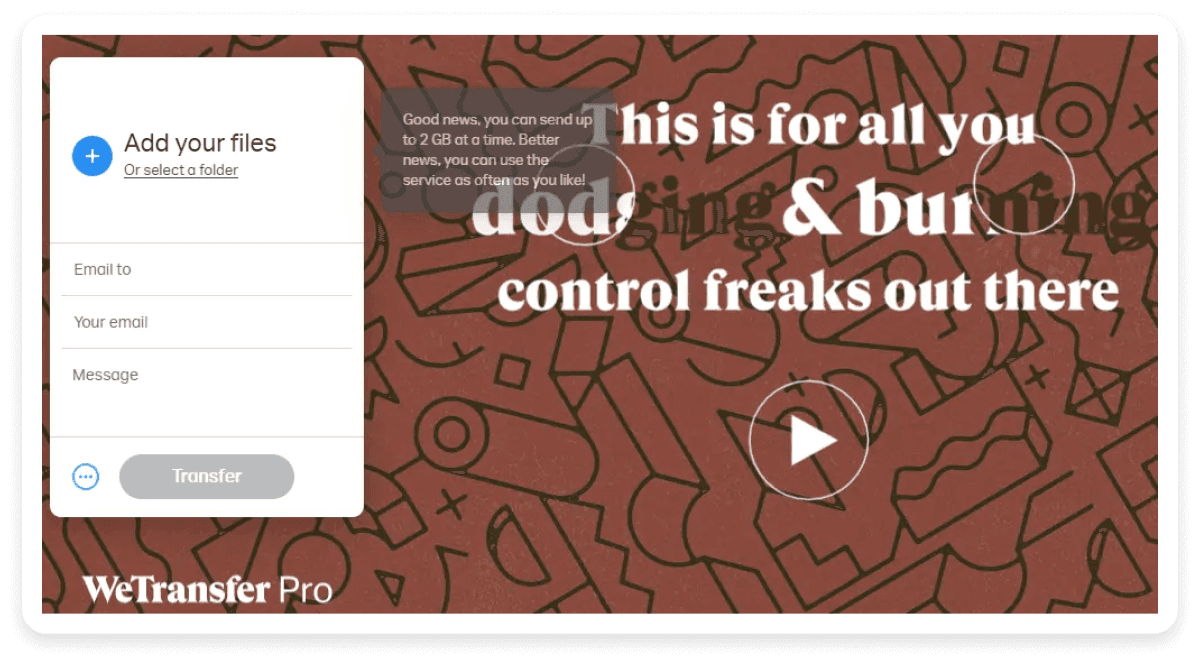
Step 2. Drag and drop or select the video file(s) you want to share.

Step 3. Enter the recipient's email address(es).

Step 4. Optionally, you can add a message or set a password for added security.
Step 5. Click "Transfer" to initiate the upload and sharing process.
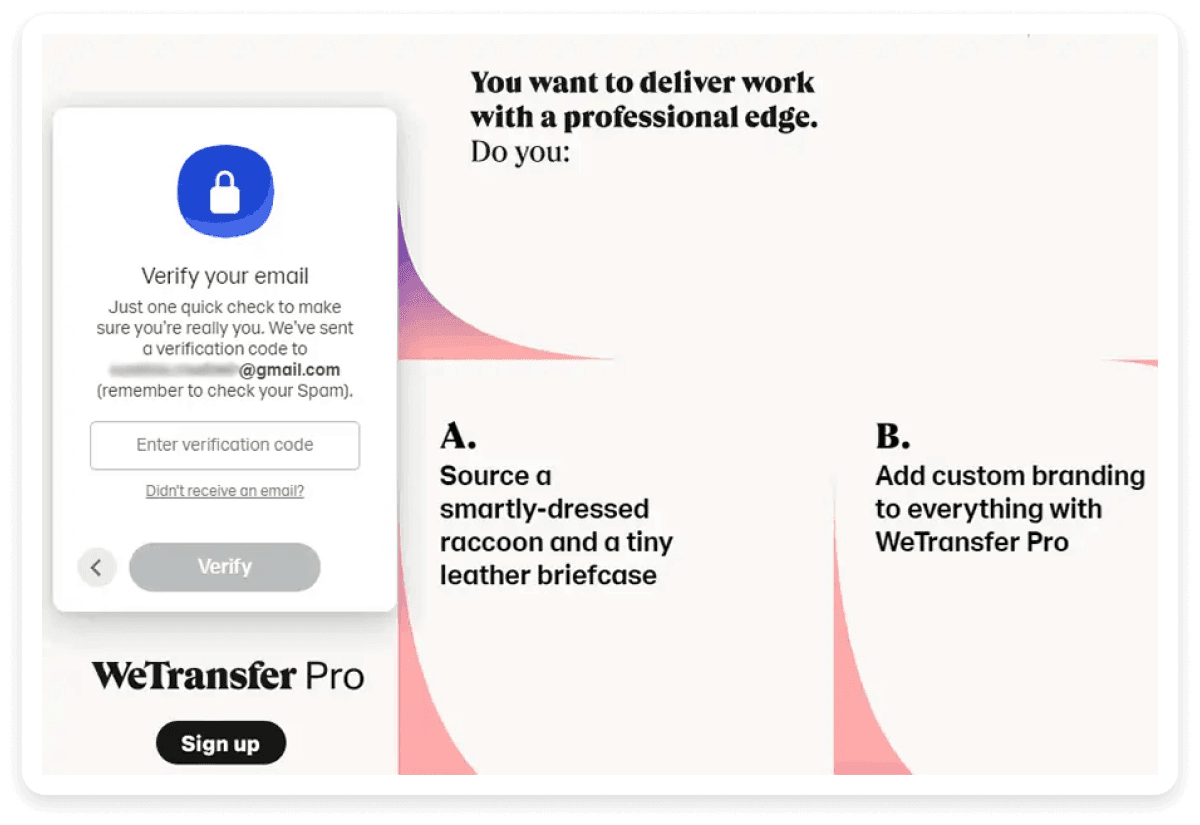
Step 6. Once the upload is complete, WeTransfer will generate a unique link that you can copy and paste into your email message.
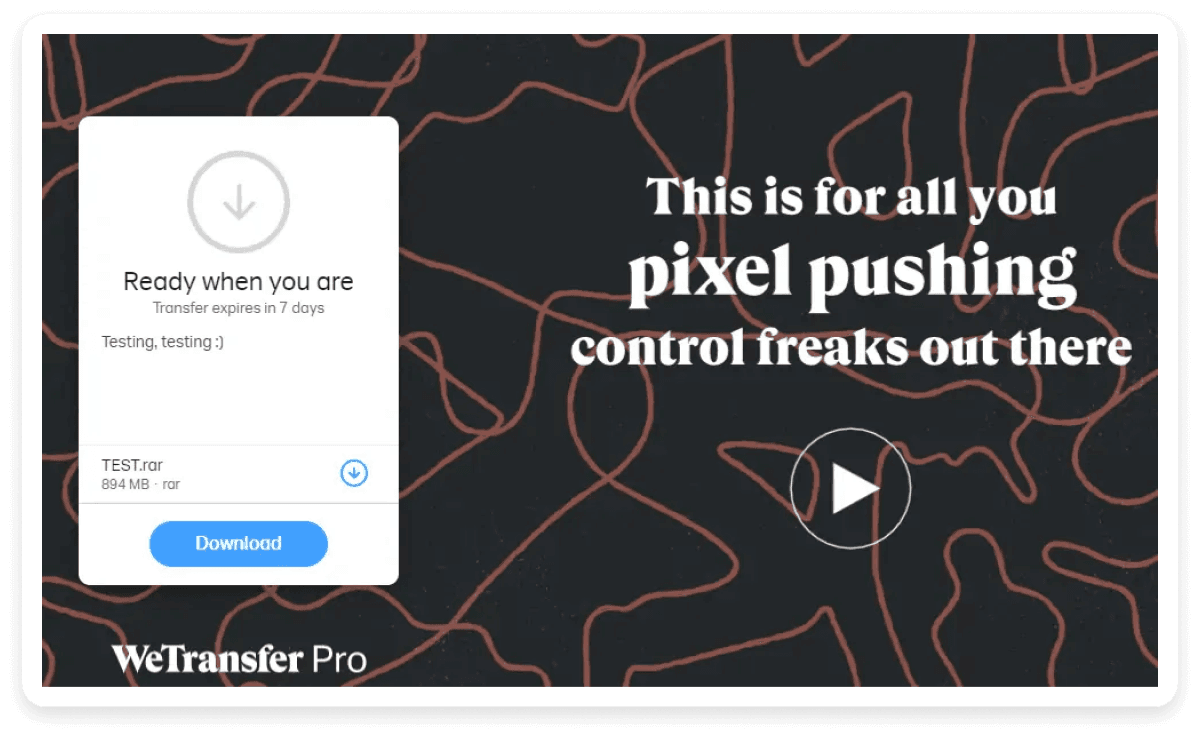
Send Anywhere
Send Anywhere is another popular file transfer service that prioritizes security by generating a unique 6-digit key for each file transfer.
You can follow the steps discussed in the case of WeTransfer to send a large video file using Send Anywhere too. One uniqueness is that it offers more security by generating a unique 6-digit key. You can send the generated link and the 6-digit key to the recipient(s) via email. The recipient(s) must enter the 6-digit key to access and download the shared file(s).
Wrap up
Sending large video files via email can be daunting, but with the various methods outlined in this guide, you can overcome the limitations imposed by email service providers. Whether you prefer cloud storage services, file compression, or file transfer platforms, you can send a video by email tailored to your specific needs and preferences. With the advancement of technology, email clients now offer more options for sending large files, making it easier and more convenient for users.




























